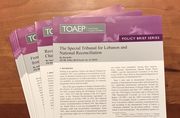Table of contents:
4.1.1. Evidence of use of physical force.
4.1.2. Evidence of absence of consent or voluntary participation.
4.1.3. Evidence of punishment.
4.2. Invasion by threat of force or coercion against such person or another person.
4.2.1. Evidence of fear of violence (or duress).
4.2.2. Evidence of detention/captivity.
4.2.3. Evidence of psychological oppression.
4.2.4. Evidence of abuse of power.
4.2.5. Evidence of taking advantage of a coercive environment.
4.2.6. Evidence of absence of consent or voluntary participation.
Element:
As noted by ICC Trial Chamber in The Prosecutor v. Jean-Pierre Bemba Gombo:
"The second material element of rape details the circumstances and conditions which give the invasion of the victims or perpetrators body a criminal character. It provides that, for the invasion of the body of a person to constitute rape, it has to be committed under one or more of four possible circumstances: (i) by force; (ii) by threat of force or coercion, such as that caused by fear of violence, duress, detention, psychological oppression or abuse of power, against such person or another person; (iii) by taking advantage of a coercive environment; or (iv) against a person incapable of giving genuine consent.
As noted, one of the possible circumstances for rape, as set out in the Elements of Crimes, is that a perpetrator "tak[es] advantage of a coercive environment". In interpreting the concept of a "coercive environment", the Chamber, in line with the Confirmation Decision, is guided by the Akayesu Trial Judgments discussion of "coercive circumstances": "[C]oercive circumstances need not be evidenced by a show of physical force. Threats, intimidation, extortion and other forms of duress which prey on fear or desperation may constitute coercion, and coercion may be inherent in certain circumstances, such as armed conflict or the military presence of Interahamwe among refugee Tutsi women at the bureau communal."
The Chamber does not exclude the possibility that, in addition to the military presence of hostile forces among the civilian population, there are other coercive environments of which a perpetrator may take advantage to commit rape. Further, the Chamber considers that several factors may contribute to create a coercive environment. It may include, for instance, the number of people involved in the commission of the crime, or whether the rape is committed during or immediately following a combat situation, or is committed together with other crimes. In addition, the Chamber emphasises that, in relation to the requirement of the existence of a "coercive environment", it must be proven that the perpetrators conduct involved "taking advantage" of such a coercive environment.
The Chamber notes that the victims lack of consent is not a legal element of the crime of rape under the Statute. The preparatory works of the Statute demonstrate that the drafters chose not to require that the Prosecution prove the non-consent of the victim beyond reasonable doubt, on the basis that such a requirement would, in most cases, undermine efforts to bring perpetrators to justice.
Therefore, where "force", "threat of force or coercion", or "taking advantage of coercive environment" is proven, the Chamber considers that the Prosecution does not need to prove the victims lack of consent.
Finally, the fourth possible circumstance to be considered under the Statute is that an invasion of the body of the victim or the perpetrator may also constitute rape when committed "against a person incapable of giving genuine consent". Footnotes 16 and 64 of the Elements of Crimes clarify that "a person may be incapable of giving genuine consent if affected by natural, induced or age-related incapacity". In such cases, the Prosecution will only have to prove that the victims capacity to give genuine consent was affected by natural, induced, or age-related incapacity.
The Chamber further notes that neither the Statute nor the Elements of Crimes sets out a specific age under which a person would be considered as "incapable of giving genuine consent". However, for the purpose of the present Judgment, and based on the factual findings below, the Chamber notes that it is only necessary for any one of the four alternative possible circumstances identified in Articles 7(1)(g)-1, paragraph 2, and 8(2)(e)(vi)-1, paragraph 2, to be proven.
In addition to the Chambers analysis of the legal elements constituting rape, the Chamber, when analysing evidence, is guided by Rules 70 and 71, which set out several principles of evidence in cases of sexual violence." [1]
As noted by ICTY Trial Chamber in The Prosecutor v. Jadranko Prlić et al.:
"The Appeals Chamber has clarified that the use of force or the threat thereof does admittedly constitute incontrovertible evidence of the lack of consent, but that the use of force is not a constituent element of rape per se. Indeed, there are factors other than the use of force which make sexual penetration a non-consensual act or an act the victim does not want. The Chamber holds that, in lieu of physical force, the perpetrator may be able to exploit specific circumstances which the victim experiences as so constraining that they render physical resistance instantly impossible. By way of example, it has been found that the victims detention at the time of the events may constitute such a circumstance.
In the Kunarac Case, the Appeals Chamber made it clear that the argument that "nothing short of continuous resistance provides adequate notice to the perpetrator that his attentions are unwanted is wrong on the law and absurd on the facts"[2]
4.1.1. Evidence of use of physical force.
4.1.2. Evidence of absence of consent or voluntary participation.
The Furundžija Trial Chamber found that:
"[...] the following may be accepted as the objective elements of rape [...] the sexual penetration [...] by coercion or force or threat of force against the victim or a third person."[3]
The Kunarac Trial Chamber considered that:
"[...] the Furundžija definition, although appropriate to the circumstances of that case, is in one respect more narrowly stated than is required by international law. In stating that the relevant act of sexual penetration will constitute rape only if accompanied by coercion or force or threat of force against the victim or a third person, the Furundžija definition does not refer to other factors which would render an act of sexual penetration non-consensual or non-voluntary on the part of the victim, which, as foreshadowed in the hearing and as discussed below, is in the opinion of this Trial Chamber the accurate scope of this aspect of the definition in international law."[4]
"[...] the actus reus of the crime of rape in international law is constituted by: the sexual penetration, however slight: (a) of the vagina or anus of the victim by the penis of the perpetrator or any other object used by the perpetrator; or (b) of the mouth of the victim by the penis of the perpetrator; where such sexual penetration occurs without the consent of the victim. Consent for this purpose must be consent given voluntarily, as a result of the victim's free will, assessed in the context of the surrounding circumstances. The mens rea is the intention to effect this sexual penetration, and the knowledge that it occurs without the consent of the victim."[5]
The Kunarac Appeal Chamber attempted to reconcile the differences between the Kunarac and Furundžija Trial Chambers as follows:
"[T]he [Kunarac] Trial Chamber appeared to depart from the Tribunal's prior definitions of rape. However, in explaining its focus on the absence of consent as the conditio sine qua non of rape, the Trial Chamber did not disavow the Tribunal's earlier jurisprudence, but instead sought to explain the relationship between force and consent. Force or threat of force provides clear evidence of non-consent, but force is not an element per se of rape."[6]
4.1.3. Evidence of punishment.
4.2.I nvasion by threat of force or coercion against such person or another person.
4.2.1. Evidence of fear of violence (or duress).
4.2.2. Evidence of detention/captivity.
4.2.3. Evidence of psychological oppression.
4.2.4. Evidence of abuse of power.
4.2.5. Evidence of taking advantage of a coercive environment.
4.2.6. Evidence of absence of consent or voluntary participation.
The Kunarac Trial Chamber found that:
"Consent for this purpose must be consent given voluntarily, as a result of the victim's free will, assessed in the context of the surrounding circumstances."[7]
The Kunarac Appeal Chamber stated that:
"[T]he circumstances giving rise to the instant appeal and that prevail in most cases charged as either war crimes or crimes against humanity will be almost universally coercive. That is to say, true consent will not be possible."[8]
"For the most part, the Appellants in this case were convicted of raping women held in de facto military headquarters, detention centres and apartments maintained as soldiers' residences. As the most egregious aspect of the conditions, the victims were considered the legitimate sexual prey of their captors. Typically, the women were raped by more than one perpetrator and with a regularity that is nearly inconceivable. (Those who initially sought help or resisted were treated to an extra level of brutality). Such detentions amount to circumstances that were so coercive as to negate any possibility of consent."[9]
The Akayesu Trial Chamber found that:
"[t]hreats, intimidation, extortion and other forms of duress which prey on fear or desperation may constitute coercion, and coercion may be inherent in certain circumstances, such as armed conflict or the military presence of Interhamwe among refugee Tutsi women at the bureau communal."[10]
The Furundžija Trial Chamber further emphasized that:
"[...] any form of captivity vitiates consent."[11]
The Kunarac Trial Chamber concluded that:
"The basic principle which is truly common to these legal systems is that serious violations of sexual autonomy are to be penalised. Sexual autonomy is violated wherever the person subjected to the act has not freely agreed to it or is otherwise not a voluntary participant."[12]
Footnotes:
[1] ICC, The Prosecutor v. Jean-Pierre Bemba Gombo, Trial Judgement 21 March 2016, para. 102-109.
[2] ICTY, The Prosecutor v. Jadranko Prlić et al., Trial Judgement 29 May 2013 , para. 70-71.
[3] ICTY, Furundžija Trial Judgment 10 December 1998, para. 185.
[4] ICTY, Kunarac et al. Trial Judgment 22 February 2001, para. 438.
[5] ICTY, Kunarac et al. Trial Judgment 22 February 2001, para. 460.
[6] ICTY, Kunarac et al. Appeals Judgment 12 June 2002, para. 129.
[7] ICTY, Kunarac et al. Trial Judgment 22 February 2001, para. 460; Kunarac et al. Appeals Judgment 12 June 2002, para. 127.
[8] ICTY, Kunarac et al. Appeals Judgment 12 June 2002, para. 130.
[9] ICTY, Kunarac et al. Appeals Judgment 12 June 2002, para. 132.
[10] ICTR, Akayesu Trial Judgment 2 September 1998, para. 688.
[11] ICTY, Furundžija Trial Judgement 10 October 1998, para. 271.
[12] ICTY, Kunarac et al. Trial Judgment 22 February 2001, para. 457 (emphasis added).







